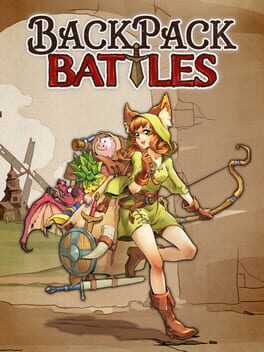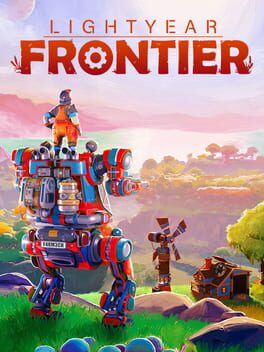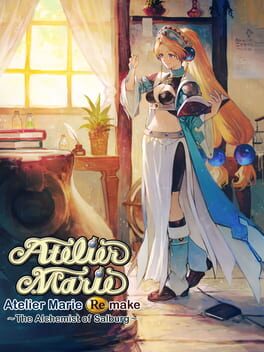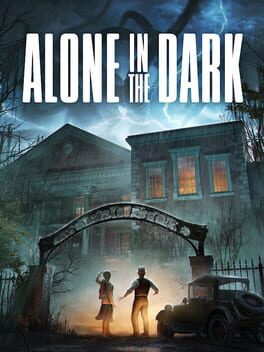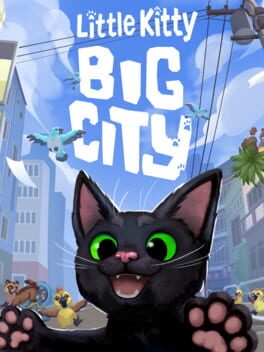ViggyNash
2024
I know 3 things about the original Dragon's Dogma
1. It's a cult classic
2. You can climb the big monsters
3. Austin Walker cant stop talking about it
All to say I came into Dragons Dogma 2 with little idea what to expect. And what I got was a game that's:
- Frustrating
- Maddening
- Painfully slow
- One of the most uniquely fascinating experiences Ive ever had.
Even when trying to explain to a friend why this game was annoying, I couldnt help but make it sound like the coolest experience ever. The stories it creates though its systems, the sense of adventure it crafts through its level design and minimal guidance, and the discordant silliness of a game at once self-serious medieval fantasy fare and anime nonsense are experiences no other game can create. The way pawns can learn about the world as they travel with other players, and help you find the things they discovered, is a fascinating system that heightens the sense of adventure. Well, perhaps its predecessor, though I wouldn't know.
But it is often quite frustrating. You run into combat encounters every five feet along the road, some of which are ambushes by huge monsters far stronger than you can currently fight. Autosaves can sometimes happen at inopportune times, leaving you moments before one of those aforementioned ambushes. But the only way to permanently save is to spend time at an Inn, which can sometimes be a half hour journey depending on how far out in the world you've explored (you can rest at campfires found throughout the world, but those don't serve as permanent saves). Pawns repeat the same lines hundreds of times (yes I know my party is all women, shut up about it)
I can go on and on about all of the games strange, fascinating, and awful design decisions, but ultimately what you need to know is there just isnt another experience like it. If you want a game to recapture the magic of exploration from your first time playing Skyrim, that doesnt hold your hand, and doesnt barf icons all over your map, you owe it to yourself to at least try this game.
1. It's a cult classic
2. You can climb the big monsters
3. Austin Walker cant stop talking about it
All to say I came into Dragons Dogma 2 with little idea what to expect. And what I got was a game that's:
- Frustrating
- Maddening
- Painfully slow
- One of the most uniquely fascinating experiences Ive ever had.
Even when trying to explain to a friend why this game was annoying, I couldnt help but make it sound like the coolest experience ever. The stories it creates though its systems, the sense of adventure it crafts through its level design and minimal guidance, and the discordant silliness of a game at once self-serious medieval fantasy fare and anime nonsense are experiences no other game can create. The way pawns can learn about the world as they travel with other players, and help you find the things they discovered, is a fascinating system that heightens the sense of adventure. Well, perhaps its predecessor, though I wouldn't know.
But it is often quite frustrating. You run into combat encounters every five feet along the road, some of which are ambushes by huge monsters far stronger than you can currently fight. Autosaves can sometimes happen at inopportune times, leaving you moments before one of those aforementioned ambushes. But the only way to permanently save is to spend time at an Inn, which can sometimes be a half hour journey depending on how far out in the world you've explored (you can rest at campfires found throughout the world, but those don't serve as permanent saves). Pawns repeat the same lines hundreds of times (yes I know my party is all women, shut up about it)
I can go on and on about all of the games strange, fascinating, and awful design decisions, but ultimately what you need to know is there just isnt another experience like it. If you want a game to recapture the magic of exploration from your first time playing Skyrim, that doesnt hold your hand, and doesnt barf icons all over your map, you owe it to yourself to at least try this game.
2024
Its quite a simple concept. You fill your backpack with items, looking for synergies that create powerful combos, and use those items to battle other players. But the strength of this game is entirely in its execution. Theres a huge number of strategies you can employ, with each character having significant differences in the types of strategies you can employ. Exploring new strategies based on the random selection of items you find in the shop between battles makes it fun to discover new ways to build up your backpack. You can choose to play in either a ranked or unranked mode, depending on how serious you want to take the game. Some items can also combine into new items if placed next to each other for one battle, so discovering the recipes available for each character provides a longer term goal to shoot for if ranked matchmaking isnt for you.
My one criticism is that you're highly dependent on how RNGesus is feeling at the moment. Because of its limited selection, and large number of items, it can sometimes feel impossible to get the items you want.
All in all, Backpack Battles is a great casual experience for people who love searching for synergies and crafting fun combos, or are looking for a clever and highly replayable autobattler experience.
My one criticism is that you're highly dependent on how RNGesus is feeling at the moment. Because of its limited selection, and large number of items, it can sometimes feel impossible to get the items you want.
All in all, Backpack Battles is a great casual experience for people who love searching for synergies and crafting fun combos, or are looking for a clever and highly replayable autobattler experience.
2024
!! This is a review of the Early Access version !!
Lightyear Frontier's world is an idyllic one. There's no real danger, the animals are cute and friendly, and resources are abundant. This is not a game where you are fighting for your live, but instead one that pitches the fantasy of a beautiful frontier homestead that you can grow on your own time. It's a wonderfully relaxing game thats thematically adjacent to titles like Terra Nil and Slime Ranger.
The Terra Nil comparison is important, because like that game your goal is environmental cleanup. You get access to new resources by cleaning up regions of the world. But the further out you go, the stronger the tools your cleanup efforts require, which is what defines the central progression loop of the game
Cleanup a region -> Get new resources -> Craft new workstations and new tools -> Cleanup more difficult regions
This loop makes for a great sense of progression, where each goal feels manageable with a bit of time and effort. Some environment design choices can pose a few annoying obstacles to this loop, but on the whole progression is consistently satisfying.
On the smaller scale, you spend your days building out farms, crafting resources to use in upgrading your tools and building new decorations and crafting stations. While there is a day/night cycle, you are never forced into certain actions by the cycle, like you are forced to sleep in Stardew Valley. If a new day rolls around while you're out exploring, you get the daily summary of the things you accomplished that day just like if you slept at home, and afterward can continue where you left off.
All of this makes for a wonderfully relaxing experience you can take at your own pace. There are still a few issues with the currently pointless economy, some awkwardness with how fertilizers work, and the necessity of certain buildings, but this early access build still provides a satisfying experience.
Lightyear Frontier's world is an idyllic one. There's no real danger, the animals are cute and friendly, and resources are abundant. This is not a game where you are fighting for your live, but instead one that pitches the fantasy of a beautiful frontier homestead that you can grow on your own time. It's a wonderfully relaxing game thats thematically adjacent to titles like Terra Nil and Slime Ranger.
The Terra Nil comparison is important, because like that game your goal is environmental cleanup. You get access to new resources by cleaning up regions of the world. But the further out you go, the stronger the tools your cleanup efforts require, which is what defines the central progression loop of the game
Cleanup a region -> Get new resources -> Craft new workstations and new tools -> Cleanup more difficult regions
This loop makes for a great sense of progression, where each goal feels manageable with a bit of time and effort. Some environment design choices can pose a few annoying obstacles to this loop, but on the whole progression is consistently satisfying.
On the smaller scale, you spend your days building out farms, crafting resources to use in upgrading your tools and building new decorations and crafting stations. While there is a day/night cycle, you are never forced into certain actions by the cycle, like you are forced to sleep in Stardew Valley. If a new day rolls around while you're out exploring, you get the daily summary of the things you accomplished that day just like if you slept at home, and afterward can continue where you left off.
All of this makes for a wonderfully relaxing experience you can take at your own pace. There are still a few issues with the currently pointless economy, some awkwardness with how fertilizers work, and the necessity of certain buildings, but this early access build still provides a satisfying experience.
Perhaps Im just spoiled by Gust's exceptional Atelier Ryza series. Perhaps, for the same reason, I have incorrect expectations for what the game should have been. Nonetheless, I find Atelier Marie to be an interesting but awkward expereince.
Unlike the story driven experience of Ryza, Marie is much more like a life sim. The core loop of the game is picking up requests from the nearby tavern, which either asks for materials you can harvest in the world, or crafted items you have to create. This is still in Ryza of course.
The key difference is that you have a time limit for the end of the game, and ~every~ action ticks down the clock. Want to harvest a material? That costs a day. Want to craft an item? Could take 5 days, or even more. The reason this is such a huge departure from Ryza is because you no longer have time for experimentation, and every action you take has to be strategically considered. Time spent crafting consumables that help survive expeditions to dangerous areas is time that could be spent tackling requests to earn money and reputation. Time holed up in the atelier crafting items is time that could be used for harvesting valuable ingredients, and finding rumors around town that provide valuable information.
The strictness of the design means the game's progression has to be equally tight... but I dont think it is. It took me a few restarts to even understand how the game wanted me to play it, and even then the randomness involved in many aspects of the game can leave you in a rut you just have to wait out. And the costly nature of crafting makes me feel like I need to have a calculator on hand to determine how much time a request is going to take, calculations that could be meaningless if the game's rng ends up working against you.
I can see the potential of the experience the game wants to craft, and I do really want it to work, but its implementation is too messy for me to fully enjoy.
Unlike the story driven experience of Ryza, Marie is much more like a life sim. The core loop of the game is picking up requests from the nearby tavern, which either asks for materials you can harvest in the world, or crafted items you have to create. This is still in Ryza of course.
The key difference is that you have a time limit for the end of the game, and ~every~ action ticks down the clock. Want to harvest a material? That costs a day. Want to craft an item? Could take 5 days, or even more. The reason this is such a huge departure from Ryza is because you no longer have time for experimentation, and every action you take has to be strategically considered. Time spent crafting consumables that help survive expeditions to dangerous areas is time that could be spent tackling requests to earn money and reputation. Time holed up in the atelier crafting items is time that could be used for harvesting valuable ingredients, and finding rumors around town that provide valuable information.
The strictness of the design means the game's progression has to be equally tight... but I dont think it is. It took me a few restarts to even understand how the game wanted me to play it, and even then the randomness involved in many aspects of the game can leave you in a rut you just have to wait out. And the costly nature of crafting makes me feel like I need to have a calculator on hand to determine how much time a request is going to take, calculations that could be meaningless if the game's rng ends up working against you.
I can see the potential of the experience the game wants to craft, and I do really want it to work, but its implementation is too messy for me to fully enjoy.
2024
Animal Well isn't the first game to be defined by their secret mechanics and hidden layers of puzzles. Fez paved the way, Outer Wilds built an entire game around it, Tunic mastered it, and Animal Well...
While I could call out a number of specific issues, they all stem from one core problem: it doesnt know the meaning of restraint. Each of Animal Well's ideas are really cool, and its biggest discoveries feel like a cosmic ephiphany, a sense of omniscience in discovering a new way to see the world. With each new item, and as you learn what the details of the world are telling you, the world seems entirely different.
But also, therein lies the problem. Compared to the examples I mentioned earlier - Fez, Outer Wilds, Tunic - Animal Well has several times more of these layers. It keeps going deeper and deeper and deeper, but without changing one key element: Getting around the world is a boring slog.
While you get a few new means of traversing the world, the game remains consistently annoying to navigate. Unlike the beautiful fluidity of Ori, or the stylish and precise Hollow Knight, theres nothing particularly fun about Animal Well's movement. This wasnt a problem when just trying to complete the main game up to the credits roll. But once you get deep into the endgame puzzles, each new discovery leads to you needing to retread the entire map to find every possible use for your new toy. While I initially enjoyed discovering and solving each new layer of puzzle, it eventually turned into a miserably tedious experience.
This is still a game I wholeheartedly recommend to most people. Even if follows a lineage of other puzzle games, Animal Well is still very much its own experience, with a completely unique aesthetic and atmosphere and novel structure and mechanics. But you have to decide when you've had enough. Getting too deep into the experience might eventually transform from a series of epiphanies into a miserable chore. So if you're a completionist, beware, because this may be a rabbit hole too deep to crawl out of.
While I could call out a number of specific issues, they all stem from one core problem: it doesnt know the meaning of restraint. Each of Animal Well's ideas are really cool, and its biggest discoveries feel like a cosmic ephiphany, a sense of omniscience in discovering a new way to see the world. With each new item, and as you learn what the details of the world are telling you, the world seems entirely different.
But also, therein lies the problem. Compared to the examples I mentioned earlier - Fez, Outer Wilds, Tunic - Animal Well has several times more of these layers. It keeps going deeper and deeper and deeper, but without changing one key element: Getting around the world is a boring slog.
While you get a few new means of traversing the world, the game remains consistently annoying to navigate. Unlike the beautiful fluidity of Ori, or the stylish and precise Hollow Knight, theres nothing particularly fun about Animal Well's movement. This wasnt a problem when just trying to complete the main game up to the credits roll. But once you get deep into the endgame puzzles, each new discovery leads to you needing to retread the entire map to find every possible use for your new toy. While I initially enjoyed discovering and solving each new layer of puzzle, it eventually turned into a miserably tedious experience.
This is still a game I wholeheartedly recommend to most people. Even if follows a lineage of other puzzle games, Animal Well is still very much its own experience, with a completely unique aesthetic and atmosphere and novel structure and mechanics. But you have to decide when you've had enough. Getting too deep into the experience might eventually transform from a series of epiphanies into a miserable chore. So if you're a completionist, beware, because this may be a rabbit hole too deep to crawl out of.
2024
(For context, I only played 1 route, Emily's specifically, on standard combat difficulty with old-school mode for puzzles which removes hints. I did switch to easy for the last two fights)
Ill be honest, Im not sure if I really enjoyed playing this. I dont think I regret it, but definitely didnt love it. Primarily, because the combat is dogshit. Ok that's a pretty broad declaration, let me expand on that.
1) Enemies are apparently made of solid concrete. It takes 2 shotgun blasts to kill the starter enemy type, a mossy humanoid thing. 4 to kill the second enemy type, a gangly flesh skeleton that only worked 1 arm on arm day. 3 to kill the thing that just looks like a headcrab. Thats right, the humanoid enemy takes 1 less shotgun blast to kill than the headcrab. The thing is, this is a double barrel shotgun, so after 2 shots it takes quite a while to reload, during which you move slowly. I have know Idea how many pistol shots (7 shot mag) it takes for any of them because the pistol is complete garbage. The machine gun can kill things simply by throwing many bullets at them, which means it burns through bullets quite quickly.
2) Encounter design is simultaneously formulaic and nonsensical. This game has some of the most obvious encounter arenas Ive ever seen, and each time I groaned, dreading whats about to come. Barely enough bullets for enemies. Annoying to use environmental throwable items. A dead end or two per encounter where enemies can start jojo stomping you because you cant get out. Not a single one was particularly interesting.
3) Your weapons all feel like kids toys. The pistol, as previously mentioned, just sucks. Too little damage and never enough bullets to be useful. The shotgun feels fine enough (kinda hard to make a shotgun suck), but feels less fun when you have to reload it a million times during an encounter, assuming your super limited stock leaves you enough shells to do the job. The machine gun feels meh, but burns through bullets so fast it never feels like enough. And then there's melee... So for the two humanoid enemies, enemies, melee is often the best weapon since it can easily stunlock enemies, can hit multiple enemies, and is guaranteed to kill an enemy before it breaks assuming it starts with full durability (melee weapons can break). The big issue, and it is a BIG issue, is that you can only swing sideways. This means that the headcrab like enemies, which are shorter than waist hight are literally impossible to hit with melee weapons. This is either a bafflingly stupid design decision, or a baffling design oversight.
So combat aside, the game has some interesting elements going for it. It has strong survival horror vibes, leaning into its gothic style and cosmic horror camp quite well. The character performances are decent all around, Hollywood stars included (though they definitely didnt give 100%). Puzzles were hit and miss, with most of the ones tied to a journal you pick up early being usually the best, some others feeling rather tedious but fine, and some that were really awkwardly implemented but would otherwise be fine.
It feels strange, but this game seems like it was made by experienced developers. But not great ones. It never felt amateurish given a general level of intentionality to most aspects of the game, but also some of those intentions feel really strange. That, combined with some consistent performance issues (I run a 6900xt gpu, 5950x cpu, 32gb ram) make for an overall experience that I wish I enjoyed more than it did, because it absolutely could have been a better game. The framework was there, the execution was not.
Ill be honest, Im not sure if I really enjoyed playing this. I dont think I regret it, but definitely didnt love it. Primarily, because the combat is dogshit. Ok that's a pretty broad declaration, let me expand on that.
1) Enemies are apparently made of solid concrete. It takes 2 shotgun blasts to kill the starter enemy type, a mossy humanoid thing. 4 to kill the second enemy type, a gangly flesh skeleton that only worked 1 arm on arm day. 3 to kill the thing that just looks like a headcrab. Thats right, the humanoid enemy takes 1 less shotgun blast to kill than the headcrab. The thing is, this is a double barrel shotgun, so after 2 shots it takes quite a while to reload, during which you move slowly. I have know Idea how many pistol shots (7 shot mag) it takes for any of them because the pistol is complete garbage. The machine gun can kill things simply by throwing many bullets at them, which means it burns through bullets quite quickly.
2) Encounter design is simultaneously formulaic and nonsensical. This game has some of the most obvious encounter arenas Ive ever seen, and each time I groaned, dreading whats about to come. Barely enough bullets for enemies. Annoying to use environmental throwable items. A dead end or two per encounter where enemies can start jojo stomping you because you cant get out. Not a single one was particularly interesting.
3) Your weapons all feel like kids toys. The pistol, as previously mentioned, just sucks. Too little damage and never enough bullets to be useful. The shotgun feels fine enough (kinda hard to make a shotgun suck), but feels less fun when you have to reload it a million times during an encounter, assuming your super limited stock leaves you enough shells to do the job. The machine gun feels meh, but burns through bullets so fast it never feels like enough. And then there's melee... So for the two humanoid enemies, enemies, melee is often the best weapon since it can easily stunlock enemies, can hit multiple enemies, and is guaranteed to kill an enemy before it breaks assuming it starts with full durability (melee weapons can break). The big issue, and it is a BIG issue, is that you can only swing sideways. This means that the headcrab like enemies, which are shorter than waist hight are literally impossible to hit with melee weapons. This is either a bafflingly stupid design decision, or a baffling design oversight.
So combat aside, the game has some interesting elements going for it. It has strong survival horror vibes, leaning into its gothic style and cosmic horror camp quite well. The character performances are decent all around, Hollywood stars included (though they definitely didnt give 100%). Puzzles were hit and miss, with most of the ones tied to a journal you pick up early being usually the best, some others feeling rather tedious but fine, and some that were really awkwardly implemented but would otherwise be fine.
It feels strange, but this game seems like it was made by experienced developers. But not great ones. It never felt amateurish given a general level of intentionality to most aspects of the game, but also some of those intentions feel really strange. That, combined with some consistent performance issues (I run a 6900xt gpu, 5950x cpu, 32gb ram) make for an overall experience that I wish I enjoyed more than it did, because it absolutely could have been a better game. The framework was there, the execution was not.
(Finished main story and ~70% of side content)
First and foremost, this is a game overflowing with charm. Its starts right from the first cutscene, as the titular kitty slips off their windowsill perch and rube goldberg's their way all the way down into a trash can on the street. Then you immediately get to basic cat-ing, such as
- Stealing slippers
- Knocking pots off of ledges
- Knocking paint buckets over an artist's canvas
Soon enough you get to start meeting some of the game's charming cast of critters, from a crow thats the embodiment of the trade offer meme, and a chameleon thats terrible at hiding. Everyone you can talk to is charming in their own way, each with a uniquely silly personality. But as you go around collecting shinies for the crow, finding capsules with cute hats for the kitty to wear, and generally exploring the open city block you have access to, you'll quickly run into the game's biggest weakness: Platforming.
Platforming in this game is often janky and inconsistent. When trying to jump a gap, your kitty might instead drop down from the edge. When you try to jump up to a platform above you, one the same height as the last ledge you climbed, your kitty just can't make it unless you approach it just the right way. Sometimes when making those jumps, the game might interpret your landing as wanting to slide down the wall. While some of this is a matter of execution, I do think this game should have taken an approach more similar to Stray, another cat adventure game.
Little Kitty, Big City is a game definitely pushing against its budget, which can sometimes be rather obvious. But the platforming issues and little bugs are never frustrating enough to ruin the overall experience. The game's charm ultimately succeeds in delivering a fun, kitty exploration adventure.
First and foremost, this is a game overflowing with charm. Its starts right from the first cutscene, as the titular kitty slips off their windowsill perch and rube goldberg's their way all the way down into a trash can on the street. Then you immediately get to basic cat-ing, such as
- Stealing slippers
- Knocking pots off of ledges
- Knocking paint buckets over an artist's canvas
Soon enough you get to start meeting some of the game's charming cast of critters, from a crow thats the embodiment of the trade offer meme, and a chameleon thats terrible at hiding. Everyone you can talk to is charming in their own way, each with a uniquely silly personality. But as you go around collecting shinies for the crow, finding capsules with cute hats for the kitty to wear, and generally exploring the open city block you have access to, you'll quickly run into the game's biggest weakness: Platforming.
Platforming in this game is often janky and inconsistent. When trying to jump a gap, your kitty might instead drop down from the edge. When you try to jump up to a platform above you, one the same height as the last ledge you climbed, your kitty just can't make it unless you approach it just the right way. Sometimes when making those jumps, the game might interpret your landing as wanting to slide down the wall. While some of this is a matter of execution, I do think this game should have taken an approach more similar to Stray, another cat adventure game.
Little Kitty, Big City is a game definitely pushing against its budget, which can sometimes be rather obvious. But the platforming issues and little bugs are never frustrating enough to ruin the overall experience. The game's charm ultimately succeeds in delivering a fun, kitty exploration adventure.

